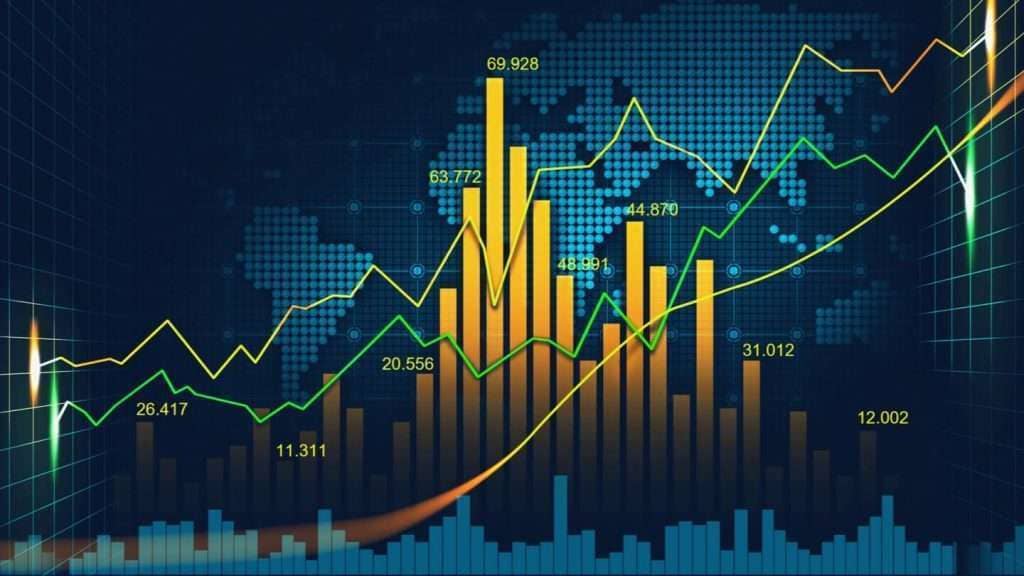Content
- How to Pick Stocks Using Fundamental and Technical Analysis
- Key Differences Between Fundamental and Technical Analysis
- Fundamental vs. Technical Analysis
- Assumption 2: Prices move in trends
- Fundamental vs. Technical Analysis Video
- What Are Technical Indicators?
- Technical analysis
- What is the difference between technical and fundamental analysis?
Schwab Equity Ratings are assigned to approximately 3,000 of the largest U.S. headquartered stocks using a scale of A, B, C, D and F. Schwab’s outlook is that A-rated stocks, on average, will strongly outperform and F-rated stocks, on average, will strongly underperform the equities market over the next 12 months. Each of the approximately 3,000 stocks rated in the Schwab Equity Ratings universe is given a score that is derived from several research factors. The assignment of a final Schwab Equity Rating depends on how well a given stock scores on each of the factors and then how that stock stacks up against other stocks within the same sector and market cap group. When screening for fundamental factors, consider focusing on stocks rated A or B by Schwab Equity Ratings®, as these are considered “buy” candidates. In the example below, this step alone narrows the list of possible stocks from 2,800 candidates to 824 candidates.

If you hold a trading position on a currency pair for more than a day, then you’ll pay/receive overnight fees depending on the direction of your two positions (long position/short position). Remember that when trading the currency market,you do not trade individual currencies, but currency pairs. Usually, when a country’s economic outlook is positive, its currency strengthens against its counterparts, as more foreign investors are looking for investment opportunities in this country – and vice-versa. This is how fundamental traders spot and trade potentially profitable trading opportunities. The overriding assumption fundamental analysts are making here is that the price will eventually revert to value.
How to Pick Stocks Using Fundamental and Technical Analysis
Technical analysis is undertaken by examining price fluctuations and patterns displayed on charts, and fundamental analysis is performed by analysing many economic elements. An analyst might, for example, employ fundamental analysis to uncover an undervalued stock and technical analysis to determine a specific entry and exit point for the investment. Fundamental analysis is the examination of industry fundamental and technical Analysis trends, financial records, and economic outlook. On the other hand, the technical analysis examines price movements and market psychology. Technical analysts use technical indicators to study and analyze the historical data of an asset’s price and other market movements to determine favorable entry and exit points of trades. Technicals refers to factors related to a stock’s price and volume action.
Depends on financial statements, brokerage analysis and new reports. Although thorough analysis does not guarantee profits, it definitely goes a long way towards eliminating emotion-based investment decisions. Not only that, it implements a measure of rationality in an ever-volatile market environment. Stock selection doesn’t have to be difficult, but you do need to be flexible. When a stock is trading in a particular range, and the oscillator’s values move into overbought or oversold areas, look for a price reversal. However, be warned that if a stock is strongly trending in a particular direction over a long period, the values could stay in overbought or oversold territory for an extended period.
Price To Cash FlowPrice to Cash Flow Ratio is a value indicator that measures a company’s stock price in relation to the cash flow amount it generates. This is determined as the ratio of Price Per Share to Operating Cash Flow Per Share. Ratio AnalysisRatio analysis is the quantitative interpretation of the company’s financial performance.
In contrast, technical analysis refers to the analysis of share/security fair price by examining and analyzing the past trends and changes in the price of shares and studying the business’s historical information. Generally, fundamental analysis takes a long-term approach to investing compared to the short-term approach taken by technical analysis. While stock charts can be shown in weeks, days, or even minutes, fundamental analysis often looks at data over multiple quarters or years. Fundamental analysts try to determine a company’s value by looking at its income statement, balance sheet, and cash flow statement. In financial terms, an investor tries to measure a company’s intrinsic value by discounting the value of future projected cash flows to a net present value. A stock price that trades below a company’s intrinsic value is typically considered a good investment opportunity and vice versa.
Key Differences Between Fundamental and Technical Analysis
If you are a value investor, there is no perfect way to analyze a stock. Even so, many successful investors will tell you that focusing on certain fundamental metrics is the path to cashing in on potential gains. It is up to investors to determine their own philosophy and figure out which strategies may work best for them.

However, combining both techniques still requires a great deal of skill as both strategies need to be tested for different markets to determine their viability. Typically, novice traders tend to use fundamental analysis as it requires fewer technicalities, while technical analysis is popular among professionals with years of experience. Once I heard an experienced trader say that it matters little whether one finds a stock using fundamentals or technical analysis , so long as one always checks the other side before taking the trade/investing. You can’t fight a downtrend so why try…better to wait for the downtrend to end. Equally, no point in heaving into a share which is blatantly on the verge of breaking some covenant or other.
Fundamental vs. Technical Analysis
Both methods are used for evaluating the stock and predicting future stock prices. Still, while fundamental analysis focuses on the stock’s intrinsic value, technical analysis focuses on the past trend of the stock’s price movement. The focus of this type of analysis are the balance sheet, profit & loss statement, and cash flow statement. In fundamental analysis, the future price of the security is decided upon the past and present performance and profitability of the company. As opposed, in technical analysis the future prices are on the basis of charts and indicators. Technical analysis and fundamental analysis typically have different goals in mind.
Fundamental analysis shows the market is falling, while technical analysis predicts it will rise. What is the difference and what the experts say is discussed below https://t.co/fkhpp3oHOh#trading #cryptocrash @hpduprz @rovercrc
— buidlbee: make it with crypto (@buidlbee) October 4, 2022
In contrast, the fundamental analysis considers the financial health of the company or business you’re thinking about investing in to figure out its intrinsic stock value. Note that you can use both historical as well as present data, and the goal is to forecast how the stock will do in the future. They are also used to determine when a trend in the market is about to reverse. Most traders use these types of indicators to predict when the price trajectory of an asset is about to change. Momentum indicators include Average Directional Index , Relative Strength Index , and Stochastic Oscillator.
Assumption 2: Prices move in trends
Personally, I consider myself a 90% fundamental and 10% technical investor. A fundamental analyst also looks at the Company’s strategy/ vision to understand the priorities of the business. Debate whether or not a for-profit company competing with rivals can effectively balance ethical business practices while competing for market share in today’s marketplace. “All else held constant” is a major problem facing all methods of estimating the demand for business products. Compare and contrast how the marketing and economic approaches deal with this problem.

On the other hand, a trader, using technical analysis, may decide that a company’s stock is going to lose value in the short term, and ‘go short’ on the shares. Technical analysis and chart patterns have the advantage when looking at what the market is going to do in the short term. Day traders look at the actual price movements that are happening and use them to anticipate the next moves.
Fundamental vs. Technical Analysis Video
For more information please refer to your account agreement and the Margin Risk Disclosure Statement. We can see that both stocks A and B have pulled back and held their 20-day moving averages . Because we’re looking for pullbacks, our first task is to confirm a price change is likely to be a temporary move and not full-on reversal. Chances of a reversal are lower if the stock has pulled back to a support level, such as a moving average or an old low. For example, if a stock can push past the previous day’s high, it could mean the uptrend resuming. I always use fundamental value analysis first; then I might use technical analysis to look for good entry and exit points.
The difference between FA and TA is pretty simple in crypto:
Fundamental Analysis – what the project, technology, and people behind it should be worth.
Technical Analysis – what the current trends have shown to happen next throughout history.FA – long term
TA – short-mid term— Ethan Luculent (@ethanluculent) June 29, 2021
This article is intended to be used and must be used for informational purposes only. It is important to do your own research and analysis before making any material decisions related to any of the products or services described. This article is not intended as, and shall not be construed as, financial advice. The views and opinions expressed in this article are the author’s [company’s] own and do not necessarily reflect those of CoinMarketCap. CoinMarketCap is not responsible for the success or authenticity of any project, we aim to act as a neutral informational resource for end-users. The class of volume indicators is made up of tools used to determine the intensity of a buying or selling market orders of a specified asset.
What Are Technical Indicators?
One way to find them is to use moving averages, which are trend-following indicators that smooth out day-to-day price movements to show a stock’s general direction over time. Support is where downward trends tend to weaken as buying pressure overcomes selling pressure. Resistance is often where upward trends start to fizzle as selling pressure overcomes buying pressure.A simple moving average is calculated by averaging a stock’s closing prices over a defined period. Many traders use 20 days as a starting point, but you can use different periods according to your trading style. The reality is that both technical analysis and fundamental analysis are important and can be used together when formulating a trading strategy.
You can look at a stock chart and various technical indicators to immediately see which direction the price is moving in, as well as support and resistance levels, and to get market trends and sell signals. Technical analysisdiffers from fundamental analysis, in that traders attempt to identify opportunities by looking at statistical trends, such as movements in a stock’s price and volume. The core assumption is that all known fundamentals are factored into price, thus there is no need to pay close attention to them.
- Companies that have high growth rates and trade on high valuations often experience large corrections.
- A) If you compared two different companies that utilized two different valuation methods, how might the quality of the results differ?
- The firm manages both funds and segregated portfolios for institutional and retail investors globally.
- The Efficient Market Hypothesis , which asserts that any historical trading data is already represented in the stock price, has been the source of much technical analysis criticism.
Purchasing an investment whose price is less than its value greatly improves the odds of above average rates of return on investment. Government policies, regulations also impact the stock price performance. Therefore, it is important to keep oneself up to speed on both the industry and economic scenario. Information about investing is a https://xcritical.com/ valuable commodity, and in today’s stock market, it is easily accessible. Investigate capital market efficiency and how information is distributed in the market to explain market price behavior. Fundamental factors shape sentiment, while technical analysis helps us visualize that sentiment and apply a framework to create our trade plans.
To jump into the Trading Jungle without any prior knowledge is a big mistake. I would suggest you spend a month testing your system with the end-of-day market data. Then, select a few stocks that meet your technical indicators requirements.
Investors tend to base their buying and selling decisions on fundamental analysis, while traders rely on technical analysis to profit in the short term. It is a method that is often used by traders and investors to make decisions about when to buy or sell a security based on price movements in the market. Technical analysts use various techniques such as charts, patterns, and volume indicators in their analysis. Technical analysis uses a security’s past price movements to predict its future price movements. It focuses on the market prices themselves, rather than other factors that might affect them. It ignores the “value” of the stock and instead considers trends and patterns created by investors’ emotional responses to price movements.